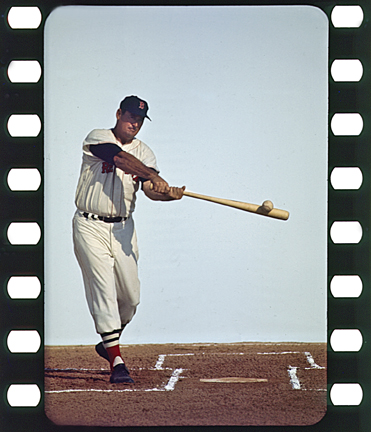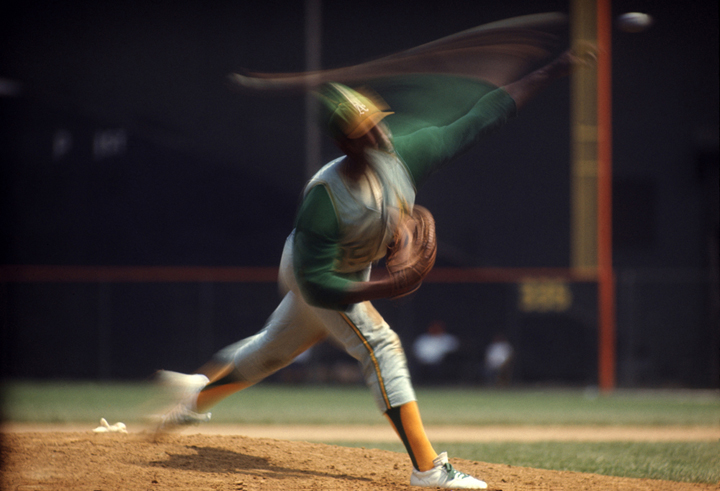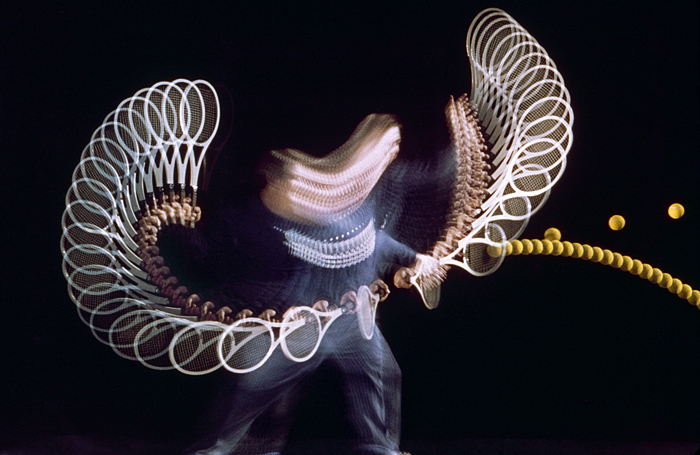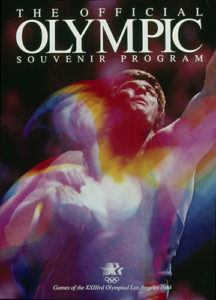The recent donation by the Charles A. Hulcher Company to the Zimmerman Archive was made by Betty Giles and Gary Beasley, the two remaining principals at the 70 year old company. The donation includes a comprehensive record of Zimmerman’s dealings with Hulcher from 1962 to 1997: invoices, correspondence, notes on phone conversations and in person visits by the photographer, promotional brochures, press photos and other ephemera. Two of Zimmerman’s Hulcher 35mm sequence cameras are included in the gift.
Many thanks to Ms. Giles and Mr. Beasley, who recognized the historical significance of the material and preserved it, even as downsizing required them to destroy a lot of company records in recent years.
Below are several photos that show the wide range of imagery John produced using Hulcher camera technology. For those interested in learning more about the history of high-speed Hulcher film cameras, Tom Dahlin’s 2012 article in Sports Shooter and Jakob Shiller’s 2012 piece in Wired are excellent reads.
Left: For a 1968 Sports Illustrated story on the science behind Ted Williams’ incomparable swing, Zimmerman used the Hulcher at 50 frames per second to record the swing in sequences from front, side, above and below. The photos were republished in Ted Williams’ 1971 The Science of Hitting, the bible of hitting manuals by the last player to bat .400 in a season.
In 1971, Oakland A’s pitcher Vida Blue was making history with his fastball, and LIFE magazine wanted a photo essay on the Louisianan with the lightening arm. Zimmerman began experimenting with his Hulcher and came up with a double shutter of his own design that both froze and blurred Blue’s flawless form (above). (Masters of Contemporary Photography: Zimmerman & Kauffman, Alskog: 1975, pp. 60-61.
In 1976, Zimmerman equipped one of his Hulchers (by now he owned two) with a multiple exposure shutter of his own design to capture Tennis Hall of Famer Vic Braden demonstrating the proper form for a loop forehand (below). This was one of a series of photos Zimmerman made for Vic Braden’s Tennis for the Future, the instructional best seller published in 1977.
Zimmerman also experimented with adding color to shutter designs that froze and blurred the action, resulting in a striking series of expressionist images.
Left: American shot putter Brian Oldfield in action during Olympic Track & Field Trials in Eugene, Oregon in 1972, as published on the 1984 Official Olympic Souvenir Program Cover.
By the time Zimmerman retired to Pebble Beach in 1990, he had sold off most his cameras with one exception, his latest model Hulcher. He continued to send it to the Hulcher team in Hampton, Virginia for periodic tune ups, a force of habit after thirty years. One hand-written entry in the Hulcher phone log from December 5, 1994 hints at the transition underway in Zimmerman’s life; “John is sending us a streak camera. We can do anything we want with it–use it for parts as it’s probably not sellable. He’s retired–new passion is golf. He says hello to everyone.”
In 1996, Zimmerman finally sold his last Hulcher. Fittingly, it went to Sports Illustrated, when his good friend, Heinz Kluetmeier, became the magazine’s Senior Staff Photographer of Special Projects. The impending sale resulted in one last flurry of phone calls to Hulcher’s Richard Hill, who was tasked with completely rebuilding the camera with “new motor, new speed control, new battery, new pellicle” and a fresh coat of black satin paint for good measure. For his part, John spent several weeks producing a meticulously detailed two volume manual for SI’s photographers with step-by-step instructions on how to operate the Hulcher with his unique image shutters. Fortunately, he made an extra manual; it remains in the archive alongside the newly donated material from Hulcher.
Linda Zimmerman




